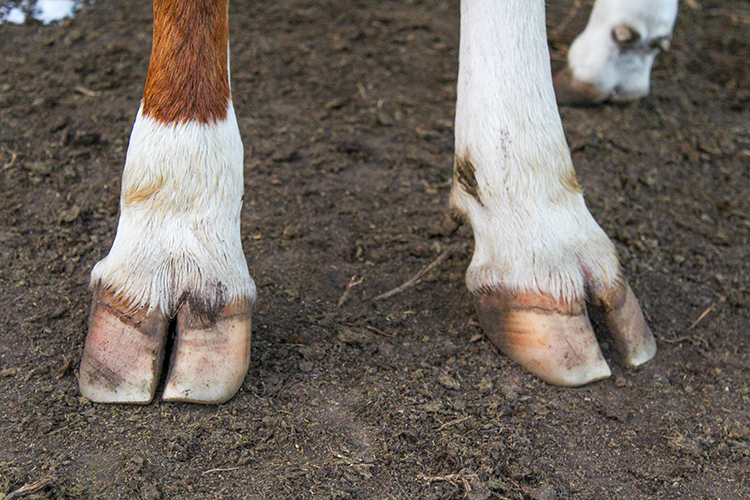
Digital dermatitis, commonly known as hairy heel warts, is a hoof disease that can have tremendous consequences for the milking herd. Those impacts can be even more detrimental when digital dermatitis is introduced earlier in life.
During a Cornell University Extension “Healthy, Hardy Heifers” webinar, University of Wisconsin-Madison’s Dörte Döpfer discussed some of the long-term problems that result when heifers become infected with digital dermatitis.
“A heifer that has a quiet lesion precalving will suffer from claw confirmation changes all of its life,” the veterinarian and professor noted. She explained that these changes can create “blocky” claws, which can affect mobility and result in weight loss. Reproduction is also impacted, as Döpfer said infected heifers stay open an average of 25 days longer than noninfected herdmates. Heifers with digital dermatitis also produce 660 to 880 less pounds of milk during the first lactation due to reoccurring lesions.
“The chronic consequences of digital dermatitis are not limited to the feet. They are expanded to much more,” Döpfer said. “We haven’t even begun to truly estimate the economic losses associated with digital dermatitis, particularly when it comes to precalving heifers.”
She acknowledged that heifers are often housed in older facilities, which may include overcrowded pens, inadequate ventilation, and a dirtier environment. These situations, plus defective or worn-out flooring, can weaken the interdigital space and open up an opportunity for infection. Additionally, she said that heifer pens may neighbor sick cow or dry cow pens, where heifers could come into contact with animals affected by digital dermatitis.
Prevention is a key element in digital dermatitis control. Döpfer advised farmers to identify the age group or pen of heifers where they find the maximum prevalence of digital dermatitis and calculate back 60 to 90 days. “This is where prevention should start,” she said.
Efforts to prevent the disease include pen walks to inspect feet and maintaining good records. Keeping heifers clean is also key, as Döpfer said leg hygiene in heifers “makes a big difference.”
Footbaths designed for heifers are also useful. Döpfer said to ensure they are the right dimensions, especially in length. Keep them clean so that they do not become a “manure bath” with too much organic matter in the solution. Scraping the alleys at the footbath’s entrance and exit can help keep the solution cleaner. As for that solution, Döpfer said to be certain it is mixed at the right concentration and maintained at the appropriate pH level.








